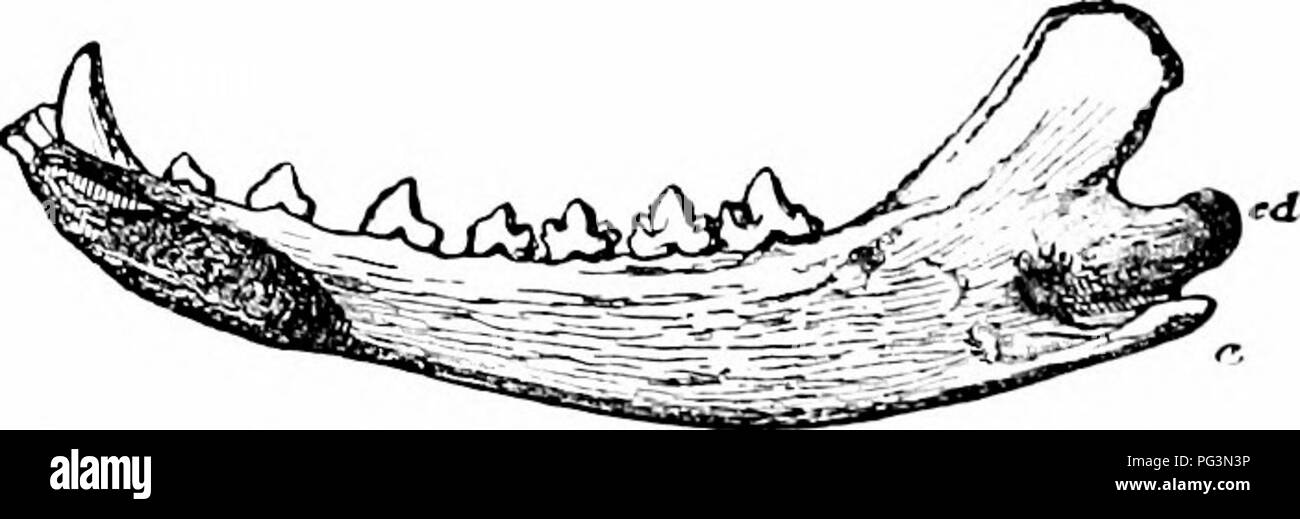. A manual of zoology. Zoology. 500 CHORDATA is possible (to a less extent in Fliascolarctos and Halinalurus). In Dasyu- riis there is a similar connection of the yolk sac. Yet the vessels do not extend with the villi into the uterine tissues as is the case with the placenta of all Placentalia. In all there is insufficient nourishment aird the yourg are very immature when horn. They are therefore carried a long time 1 y the mother in the marsuplum, a pouch formed by a fold of skin on the posterior ventral surface, into which the nij)ples open. The ventral surface is supported by the marsupial

Image details
Contributor:
Central Historic Books / Alamy Stock PhotoImage ID:
PG3N3PFile size:
7.2 MB (214.7 KB Compressed download)Releases:
Model - no | Property - noDo I need a release?Dimensions:
2750 x 909 px | 23.3 x 7.7 cm | 9.2 x 3 inches | 300dpiMore information:
This image is a public domain image, which means either that copyright has expired in the image or the copyright holder has waived their copyright. Alamy charges you a fee for access to the high resolution copy of the image.
This image could have imperfections as it’s either historical or reportage.
. A manual of zoology. Zoology. 500 CHORDATA is possible (to a less extent in Fliascolarctos and Halinalurus). In Dasyu- riis there is a similar connection of the yolk sac. Yet the vessels do not extend with the villi into the uterine tissues as is the case with the placenta of all Placentalia. In all there is insufficient nourishment aird the yourg are very immature when horn. They are therefore carried a long time 1 y the mother in the marsuplum, a pouch formed by a fold of skin on the posterior ventral surface, into which the nij)ples open. The ventral surface is supported by the marsupial /)w;7«-, slender rods articulated, right and left, at the pul)ic symphysis. Other characteristics of the marsupial skeleton are the inllected posterior angle of the lower jaw (ilg. 608, a) and the rudi- mentary replacement of teeth, only premolar 3 being replaced. In front of the functional teeth is a row of dental aniagen, which never ile- velop. These are usually regarded as indicating a prelacteal dentition, and the functional dentition as the milk dentition; but they may be the milk dentition and the functioning teeth the permanent dentition. The cloacal and sexual apparatus has already been described (p. 557). Marsupials occur in the Jurassic and tertiary of Europe and America. They were apparently then spread over the earth, but were crowded out by the placental mammals and persisted onlvas remnants (CffK£>/«/« and the opossums) in America, but as a richly developed fauna in -ustralia; yet no fossils are known. Fig, 608âLower jaw of Thylaciniis cynoccphahis (fn m Flower), fhowint; (u) the inflected angle characteristie of marsupials; cd, articular surface. there earlier than the pleistocene. In the latter region thev continued because, on account of the early separation of this continent from the rest of the world, no development of Placentalia occurred (p. 162). In Australia, in ada|itation to similar conditicms they have undergone a devcloi)ment analogo